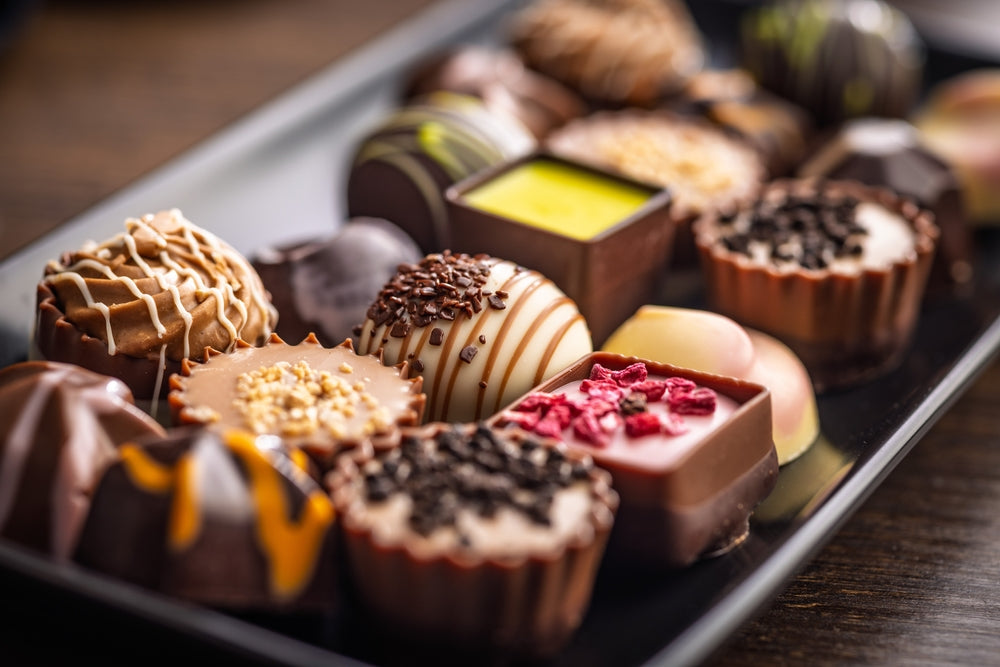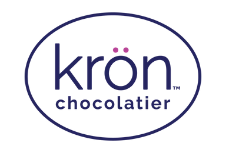
If you are a chocolate lover and haven’t tried a praline chocolate yet, you are missing out! Pralines are not just like any other sweet – they are a decadent experience that take your taste buds to a ride of delight. Made with chocolate and a creamy nut filling, they’re smooth, rich, and full of flavor. Popular in places like Belgium and France, pralines are now enjoyed all over the world. Whether you are looking for a luscious gift or want to treat yourself to something delightful, this treat fits all roles. If praline chocolate a new term for you? If so, keep reading and find answers to all your questions. This blog is all about what it is, how it’s made, and why so many people love it.
What is Praline Chocolate?
Praline chocolate is a delightful confection that feature a chocolate case with a nut-based filling inside. The nutty filling inside is called “praline” and this is where this treats gets its name from. Traditionally, pralines are made with almonds or hazelnuts, but variations exist that incorporate different nuts and flavorings. Praline chocolate is usually bite-sized and comes in various shapes and forms.
“Chocolate praline contains a chocolate shell with softer nutty filling inside.” – Wikipedia
Chocolate praline is usually considered a Belgian or French treat. But where does it really come from? And who invented it? Let’s answer all your question about the history of this chocolate.
When was Chocolate Praline Invented?
The concept of pralines dates back to the 17th France, where sugar-coated almonds were a popular delicacy. However, the praline chocolate as we know it today was invented in Belgium in 1912 by Jean Neuhaus II. He created the first filled chocolate bonbon, or praline, by encasing a soft filling within a chocolate shell. This innovation was a revolution! After all, this new confection didn’t just have a more defined flavor but people also started considering it a luxurious treat.
What Ingredients Are Used in Praline Chocolate?
The ingredients used in praline chocolate are evident from its name: chocolate and praline. Apart from this, it can contain sugar for caramelization and sweetness as well as additional flavoring for that extra kick. Here is a list of ingredients commonly used to make this Belgian delight:
-
Chocolate: Dark, milk, or white chocolate can be used, depending on the desired flavor profile.
-
Nuts: Almonds, hazelnuts, pecans, and walnuts are popular choices.
-
Sugar: Used for caramelization and sweetness.
-
Cream: Often added to create a smooth filling.
-
Flavorings: Vanilla, sea salt, or liqueurs can enhance the taste.
As aforementioned, this confection may contain dairy, nuts, and cream. So, it may not be a very ideal choice for people following certain dietary restrictions. If you are vegan or allergic to nuts, try to find alternatives that are more health-friendly for you.
What Varieties of Praline Chocolate Exist?
Praline chocolates come in so many different styles and flavors. From the classic pralines to fruity, spiced, or alcohol-infused creations, there’s something for everyone. Some even have crispy textures like wafers or puffed rice for extra crunch. This means, you really have so much to explore in this confection range. You can start out with the following:
-
Classic Pralines: Featuring traditional hazelnut or almond praliné fillings.
-
Fruit-Infused Pralines: Incorporating flavors like raspberry, orange, or passion fruit for a fruity twist.
-
Spiced Pralines: Enhanced with spices such as cinnamon, cardamom, or chili for added warmth and complexity.
-
Alcohol-Infused Pralines: Blended with liqueurs like Grand Marnier or Amaretto for an indulgent experience.
-
Textured Pralines: Including crispy elements like wafer bits or puffed rice for a delightful crunch.
These variations cater to a wide range of palates, making praline chocolates a versatile treat. Undoubtedly, all of these are worth a try. If you want to try praline chocolate for a premium taste experience, Kron Chocolatier has you covered. We hand-craft all our treats with love and high-quality ingredients – and this one is no different. Place your order today and PRALINIFY your sweet tooth.
What’s the Difference Between Praline, Bonbon, and Truffle?
Pralines, bonbons, and truffles all fall under the chocolate confectionery family but differ in key ways. cocoa Pralines are known for their nut-based filling, bonbons often have a soft or liquid center, and truffles are rich and creamy, usually rolled in or coated in chocolate
People often confuse pralines, truffles, and bonbons with each other. I totally get it… It’s easy to mix up these bite-sized chocolate treats - they may look similar. But in reality, they are way different from each other. Each one has its own unique filling, taste, texture, and history. Also, each of these satisfy different preferences. Whether you prefer nutty, creamy, or rich chocolatey centers, you have to know the difference between pralines, bonbons, and truffles. Fun fact: this can even help you discover a new favorite treat. Here's a simple table to break down their differences:
|
Feature |
Praline |
Bonbon |
Truffle |
|
Base |
Roasted nuts + sugar (praliné) |
Chocolate shell with flavored filling |
Chocolate + cream (ganache) |
|
Texture |
Creamy or slightly grainy |
Smooth shell, soft or liquid center |
Soft, smooth, sometimes dense |
|
Flavor |
Nutty and sweet |
Varies—fruity, nutty, liqueur-based |
Rich, chocolatey, sometimes boozy |
|
Use |
Filled in chocolate shells |
Decorative, assorted gift chocolates |
Rolled in cocoa or nuts, bite-sized |
Why Are Belgian Pralines So Famous?
Belgian pralines are luxury chocolates with a smooth shell and a soft, flavorful filling. Invented in Belgium in 1912, they often contain nut pastes, creams, or ganache. Pralines are beautifully packaged and widely considered a symbol of indulgence, making them popular as gifts and special treats worldwide.
Undoubtedly, Belgian pralines are the gold standard due to their high-quality ingredients, artisanal techniques, and innovative flavors. Here’s why they stand out:
-
Legacy of Craftsmanship:
-
Belgian chocolatiers like Neuhaus, Leonidas, and Godiva have been perfecting pralines for over a century.
-
Strict Chocolate Standards:
-
Belgian law requires a minimum 35% pure cocoa in chocolate and limits artificial additives.
-
Diverse Fillings:
Belgian pralines feature a wide range of fillings—from nut pastes to coffee cream, marzipan, and fruit ganache. -
Luxury Packaging:
Presentation is key; pralines are often packaged beautifully, making them ideal for gifting.
Final Thoughts
Praline chocolate isn’t just a treat - it’s an experience. The contrast of velvety chocolate with rich, nutty praliné creates a sensory delight that satisfies cravings and induces joy. It’s made with chocolates and nuts and is a pure delight. Whether savored slowly with coffee, shared with friends, or gifted in celebration, pralines capture the essence of sweet indulgence. From their French and Belgian roots to their global popularity today, these treats have earned their place as one of the world’s most beloved confections.








